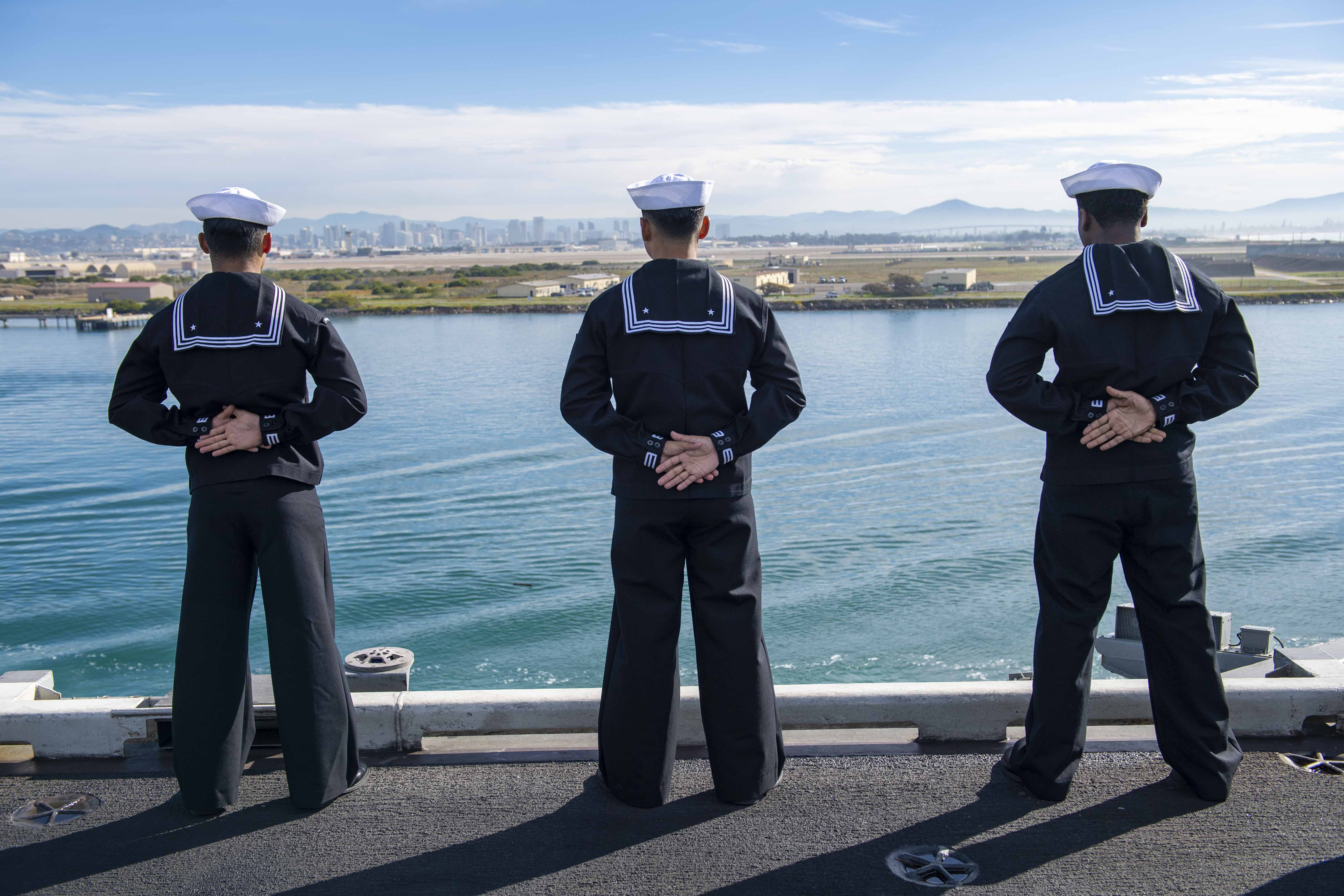
Three in 10 sailors did not have to move due to their new billet assignments, the head of naval personnel said Wednesday.
As a result of changes to billet assignments, such as the detailing marketplace assignment policy, sailors are able to stay in the same geographic area longer, Chief of Naval Personnel Vice Adm. Richard Cheeseman said Wednesday during a Navy Memorial talk. The detailing marketplace assignment policy is the Navy’s billet-based advancement program that aims to give sailors more control over their promotions and next assignments.
While 30 percent does not come across as particularly high, Cheeseman said it is for the sea service. Retired Rear Adm. Frank Thorp, president of the U.S. Navy Memorial, said he remembered during his service that the rate was less than 1 percent. When people got new assignments, they expected to move.
Consistent geographic location is one way the Navy is working to retain sailors. Cheeseman noted that the service is on track to meet its goals for retention. For some sailors, especially those with families, the chance to stay in the same location can be enough of an incentive to keep them in the service.
Selected reenlistment bonuses are another tactic, he said. In some cases, the Navy has done so well at retention that it does not need to offer retention bonuses for some billets, he said.
“But you got to figure out where to take risk. Can we have some really critical skills that we’re going to need now and going forward? So how do we incentivize those folks correctly?” Cheeseman asked rhetorically.
But while the Navy can retain sailors, getting them in the door is a different issue, Cheeseman said.
It’s unlikely that the Navy will meet its recruiting mission, which set a goal of 40,600 sailors for Fiscal Year 2024, Cheeseman said. The Navy’s goal is higher than its one in Fiscal Year 2023, which the service also missed.
But the Navy saw more contracts in FY 2023 than in FY 2022 despite meeting its goal in FY 2022. In order to meet its recruiting goals, the Navy drained its delayed entry program – the group of people who sign contracts but are not immediately sent to bootcamp, Cheeseman said.
Without the buffer provided by the delayed entry program, the service needs to bring in more people to meet its goal, the personnel chief said.
While the Navy is likely to miss its recruitment goal, the service is slowly closing the gap. Earlier in the year, the service estimated it would miss the mark by 6,700 sailors. Now, it’s at 6,200.
How many sailors the Navy will be short is still unclear, Cheeseman said, but recruiters are working every day to close the gap.





